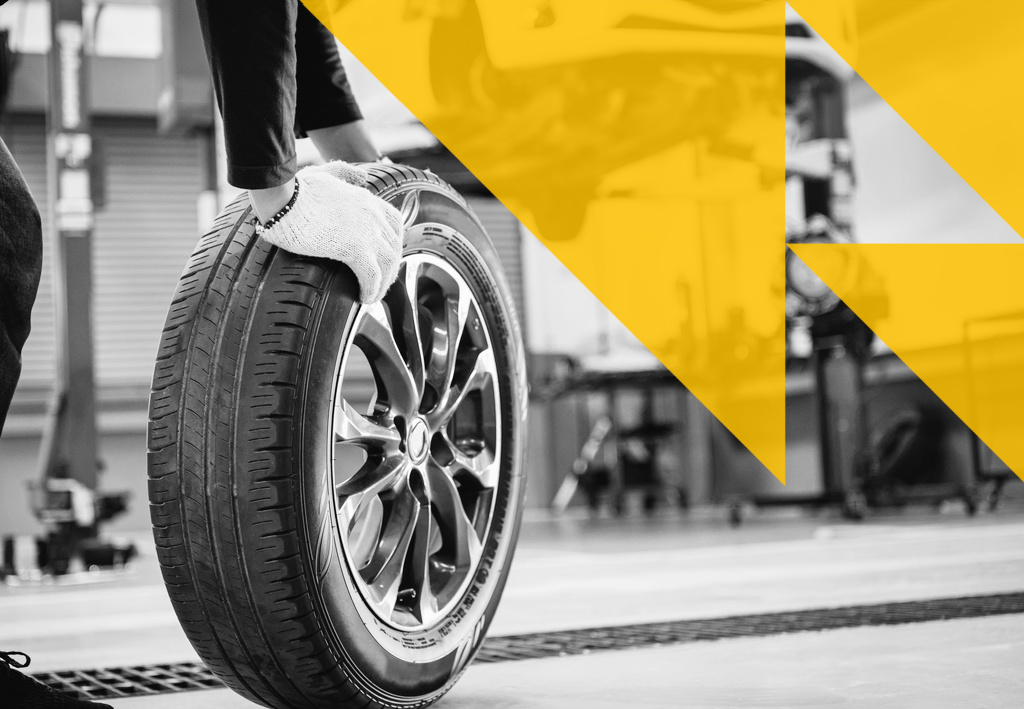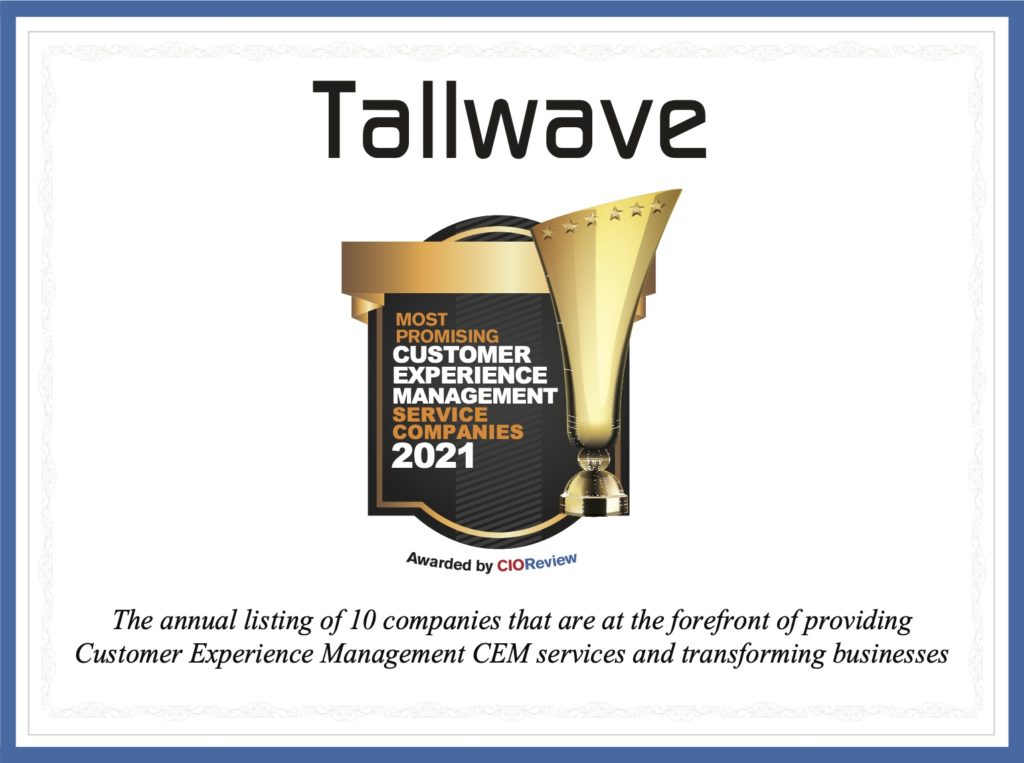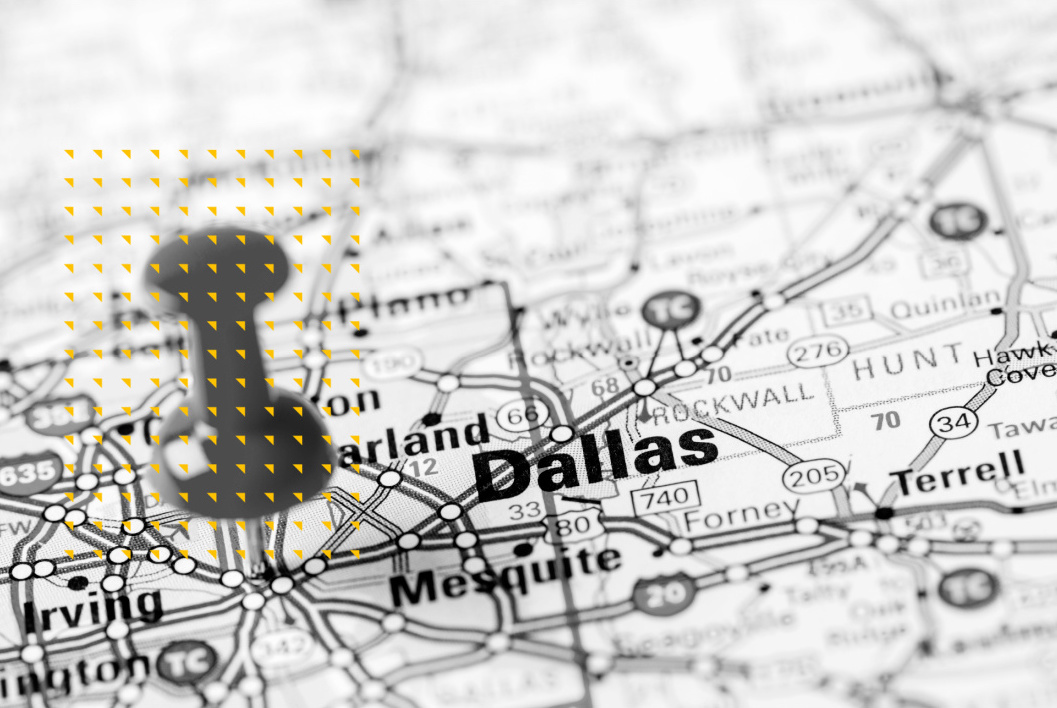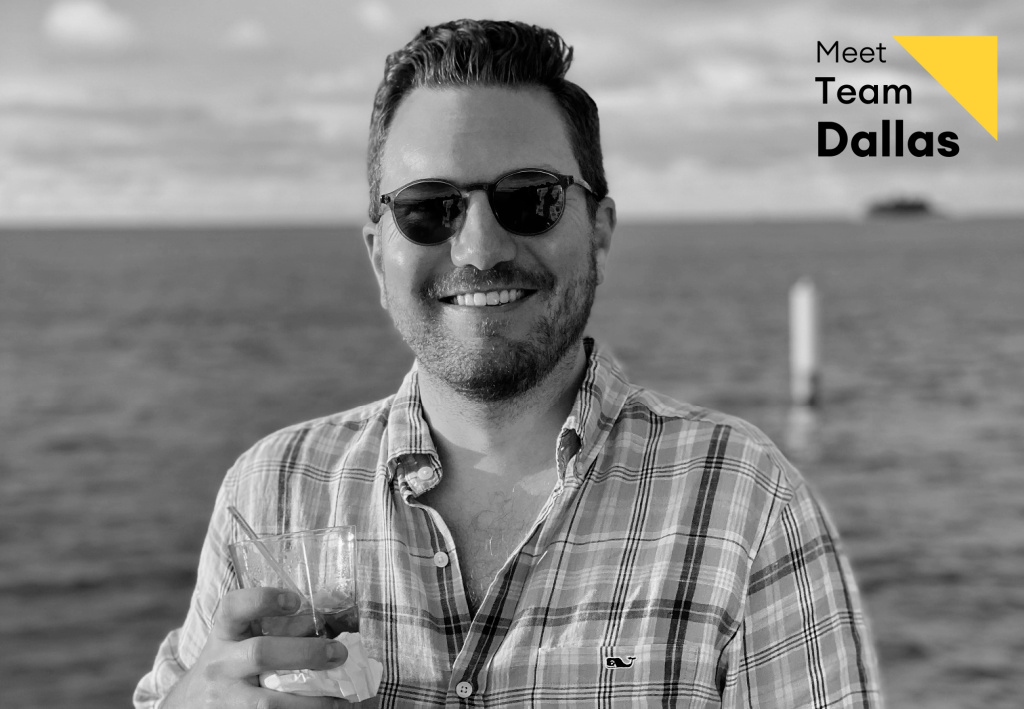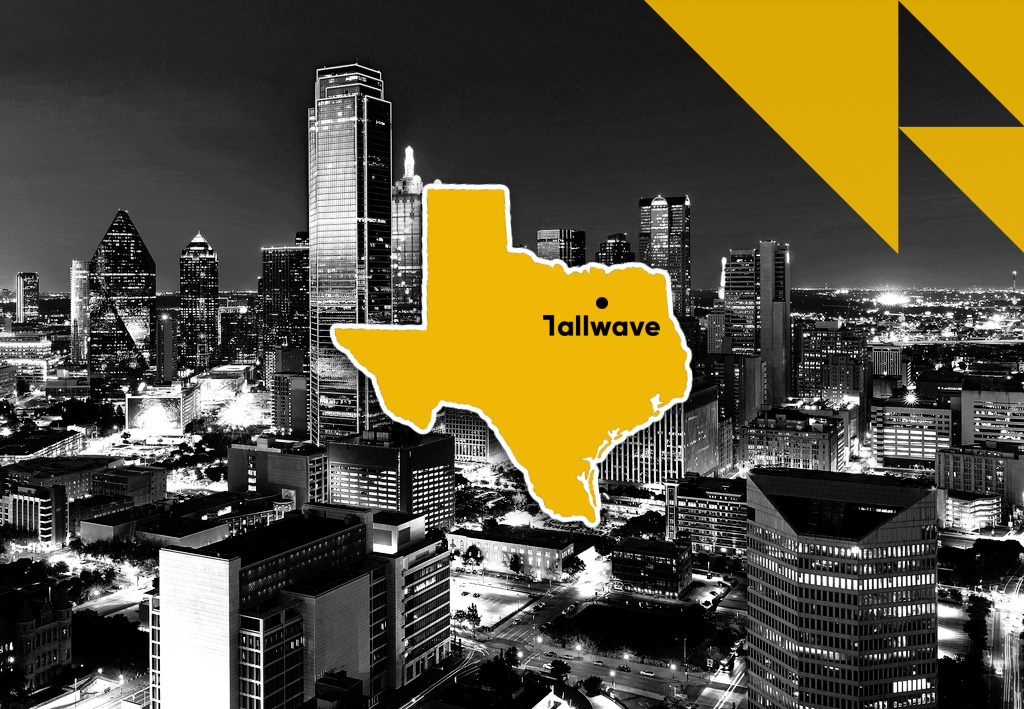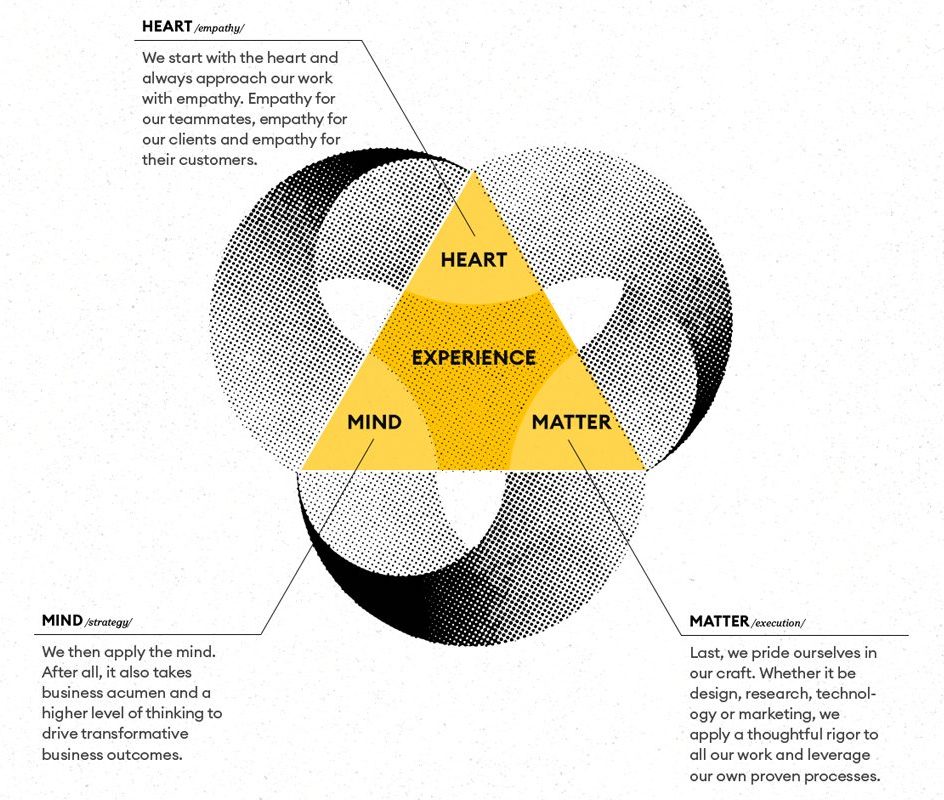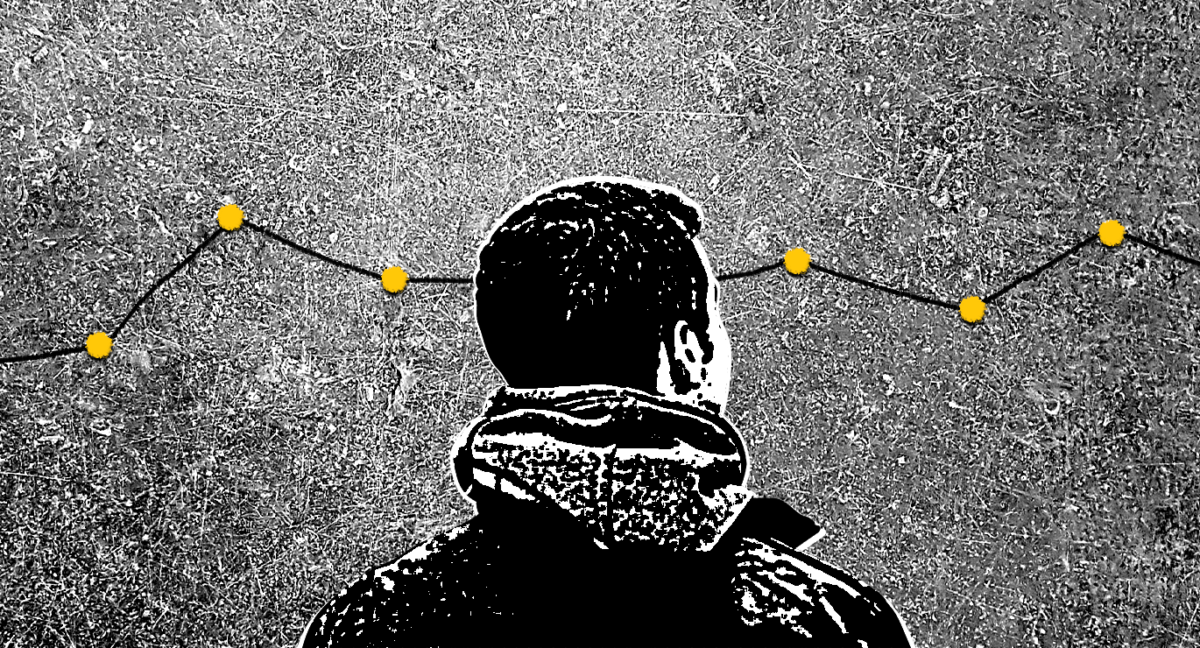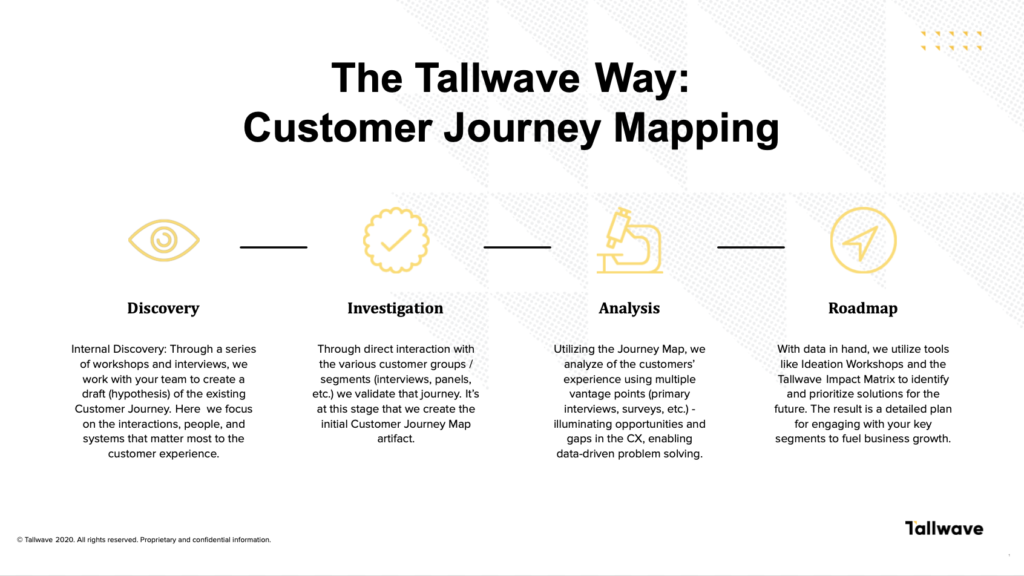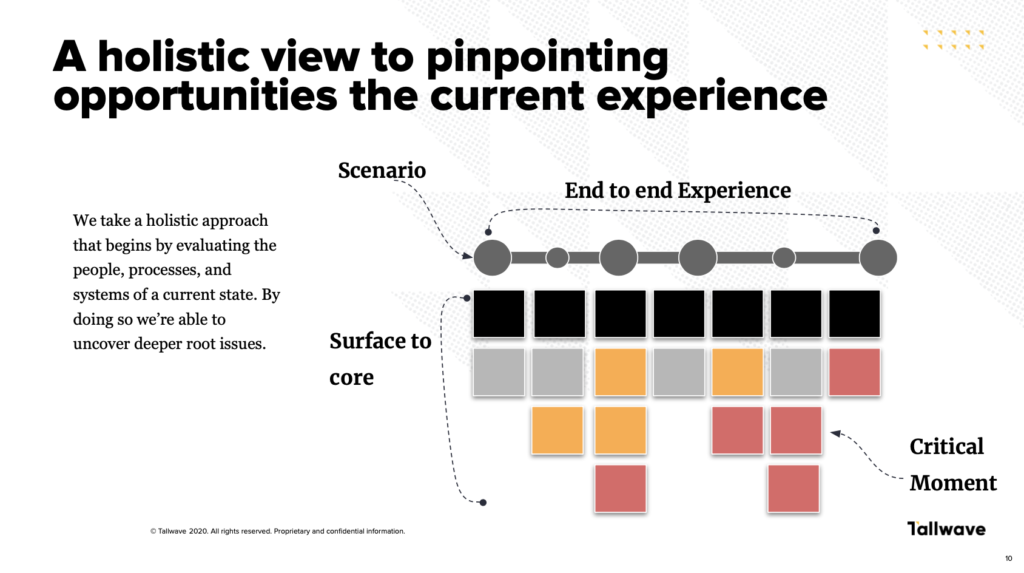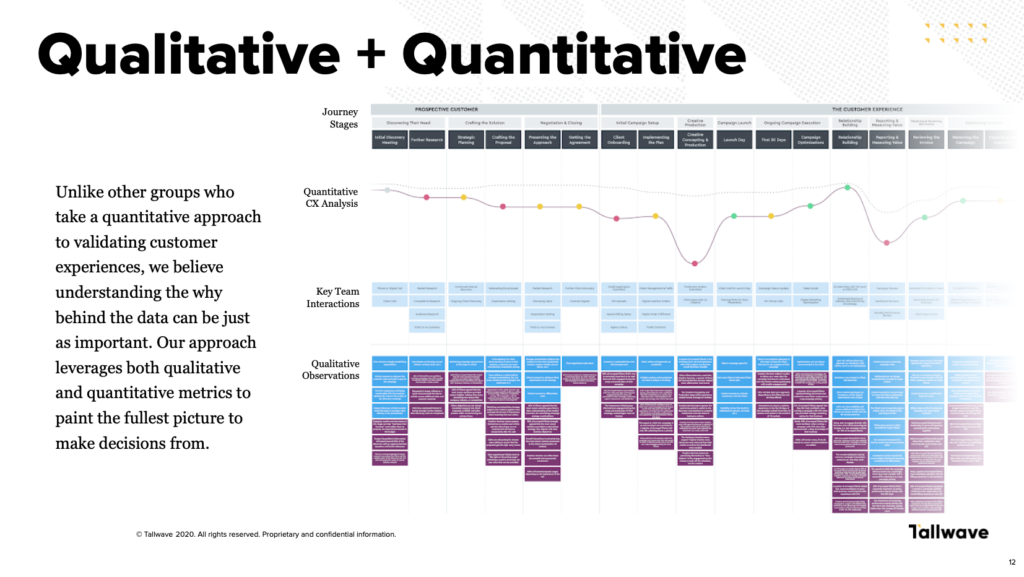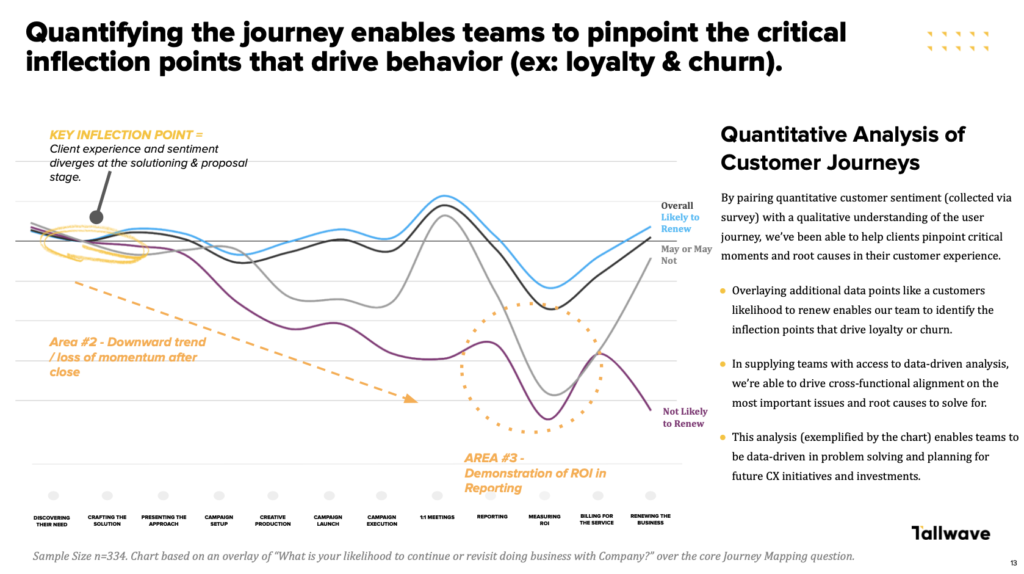Jesus Ramirez: Let’s kick things off! Just a little bit about me. My name is Jesus Ramirez. I’m the VP of Strategy and innovation at Tallwave. And I’m here with Phuong Peterson, CMO at SimpleTire. I’m really excited about this conversation. We’re going to cover quite a lot of topics, everything from the direct-to-consumer space, to building a great brand and customer experience, to looking at new consumer behaviors and opportunities for brands. [We’ll also discuss] what’s on the horizon – [what’s] coming down the pipeline [for Simple Tired] that we should all be excited about. So, there’s a lot to cover, but to start., you have such an amazing background. I’d love if you could share a little bit about your personal journey, your experience, and your background with us.
Phuong Petersen: Yeah, absolutely… [I went to] college at Hamilton College, a small liberal arts school. I love small liberal arts because I think it helps you understand all the different types of connections you can make across a lot of disciplinary disciplines. And so that was a really great background. I then jumped into finance, which is kind of odd as a marketing person, to start in finance. But finance was a really great way to start my career. I believe that it’s really important to understand the fundamentals of what makes a business model work and how you [can] make businesses profitable. After a couple of years in finance, I decided that I wanted to be the person who was like making the decisions [on] how to drive revenue and drive growth in the business versus analyzing and trying to inform the decisions.
So, I decided to go to business school with the intention of transitioning into marketing. I was able to go to Procter & Gamble after attending Wharton. It was such a great fundamental start… It’s the classic CPG [organization] where you learn all the [buzzwords], branding and marketing fundamentals. I [learned about] consumer insights and how you [can] use insights to drive communication and messaging strategies, but also [about] product development. How you bring all that to life in a creative idea and amplify that through a brand campaign. And then last, [I learned] how to partner with all the other people within [the] ecosystem, like retailers, to really drive growth, not just for you, but for your retailers to grow growth in the market and the category.
After several years at Proctor, I left because I had the opportunity to move closer to home and to my family. So, I we went to Boston and actually, looking back in the switch, it was a really odd switch, candidly. I went from CPG brand management to commercial insurance. So, jumping from CA consumer packaged goods to commercial insurance and insurance financial services industry, and then not only that, but doing B2B marketing. I didn’t realize how drastic [that] switch [was]… But it was really a great experience because it’s still taking a lot of the frameworks, I learned in brand management, [and] applying [them in a different way] … There’s a lot of richness in B2B marketing that I don’t think, as business to consumer person, you would know until you do that.
So, having that stint to learn B2B marketing in a very different industry kind of like made me realize there’s a lot more out there to learn in marketing and thinking about how you apply marketing tactics and strategies across different disciplines and industries. From there, I, maybe late in my career, realized, “Wow, there’s digital advertising. That’s out there! Maybe I should learn a lot more about it.” This was when DTC was starting to pick up a lot and we were testing a lot of direct-to-consumer products in the financial service industry space – the insurance space. And so, from there, I was able to get my hands dirty and go into at a startup incubator within Liberty Mutual and start learning how to do ad word campaigns. What’s SEO? How do you think about email and deliverability of email? And fortunately, I was then able to jump as COO virtually at Wayfair, which was a really nice. [It] really rounded out my skills because I [still] got to work with the business owners to understand: How do you create the brand strategy? The creative? You know, how do you think about a lifestyle brand like what we did at Birch Lane? But then also own the performance marketing side and own the ad spend efficiency and top line growth. So, a couple of years there was a really great place to really figure out how to put all the pieces together and think about that as a holistic CMO.
And then lastly, I joke[that] my husband’s an early adopter of SimpleTire. So, when SimpleTire was coming around, he was like, “You should take a look at this company. It’s got a lot of things going for it. You might not expect and [I] really fell in love with the founders, the culture, what they were doing and realized that it was another place to really hone in on that holistic CMO-skillset at a smaller place where you can actually build something, and then scale it. And it was right at the right time to be able to do that.
Innovation is a really important part because we know that the environment is changing constantly.
JR: That’s fantastic. Yeah. Thanks for sharing all that. I think what I find fascinating about your background is just the diversity of your roles and the well-roundedness of your roles, given all the different types of businesses that you’ve worked on. And it’s interesting because there’s certain things that are commonalities across all industries, like focusing on the customer… or the importance of brand, but then there are very, very big differences if you go, say, from B2C to B2B. So, it’s interesting that you have that experience across all of those… For those in the audience who may not be familiar with SimpleTire, can you tell us a little bit about the company?
PP: Yeah. SimpleTire was started in 2012 by two brothers, Andy and Josh Chalofsky who saw a new way to think about: How do we deliver [and] how do we improve the tire buying experience for the customer in a tech driven way? So, they partnered with Kenny Pratt, who’s our CTO, to think about a new business model. What they realized was customers don’t really see the selection of tires that they can get when they just go to a brick and mortar, and secondly, the range of prices you can get with that selection. And so, this was when DTC was starting to pick up. They said, “What if we can do this? Deliver this in a way for the customer that simplifies the process a little bit? So, they have selection, they have the value, they have an easier way of selecting the tires and [having them] delivered in this e-commerce way.”
So, the team built that model. [They] built that network of connecting all of the suppliers together, and then having an interface through e-commerce to be able to provide that for the customer. I would say, in the last couple of years to evolve that even more, it wasn’t just about providing the selection of tires and the prices, but actually then thinking about how do we provide a better customer experience in the whole tire replacement journey. Tire replacement probably isn’t the most exciting thing someone looks forward to when they have to do it. And it’s quite a daunting task, if you think about, when you realize you have to solve the problem. So, they realized not only can we actually help select tires, but how do we create convenience out of it and do it all in one solution? Recently we were able to build our network further and have installation partners join our site to be able to let the customer find a place or find the tires, select the tires, purchase tires, and book the installation and pay for all of it online, which is starting to create that convenience and the customer experience that I think is really important, especially for something like replacing tires.
JR: Yeah. It’s not the best experience to replace tires. And I love it. It sounds like there’s two really core aspects of what you’re building: One being the convenience factor., and then two being the transparency factor. Transparency around pricing, selection, and just [providing] information. [There’s] a certain amount of education that’s involved.
PP: Yeah, absolutely. So, when you think about what we’ve done, we’ve been doing a lot of consumer research recently, and when someone understands that they have a problem – that they actually have to replace their tires – you start asking yourself locked questions. And one of the things I think is convenient with online is that you actually could: One, do it at your own pace. So, if you’re not ready to tackle it today, you can take your time to do it. Versus when you go to a brick and mortar, you might feel a little more pressure to make those decisions quicker. So, you can take your time to figure out how you want to solve the problem. You can research a lot of information online, the way you [want] to research it… You can find the right shop for you that might be closest to you. You might find the right availability of the tire that you’re looking for. You might not even know what tire size you should have for your vehicle, which is actually the first part of the process, which is a little daunting, itself. And, so, having the ability to do it online, I think helps lower the [customer’s] anxiety a little bit, because they’re able to control the experience more.
JR: One thing that’s interesting is that SimpleTire is a part of this growing trend of companies that are moving from what I would say is sort of a traditional retail sales model to a DTC model. We’re seeing this with mattresses, appliances, even cars. Right? And, and so I’m curious, what are some of the unique aspects and challenges of a DTC model [are] that may not exist in traditional model?
PP: You mentioned the several categories and even on, you know, virtually from Wayfair, furniture was another big one, as well, because a lot of people like to see it in-person and touch it and understand the dimensions. And so, the first thing I think you think about in terms of going from traditional to DTC is that it’s just a new process. We’re so used to going into a store and looking at things, right? So, the idea of just starting a whole process, it’s a new habit or new routine that you have to figure out how to tackle. So, that’s the first challenge. And when you have something unfamiliar, the question then [is how do you try] to make it more familiar so [that] it’s not so daunting.
For example, like I mentioned on, on SimpleTire, we actually just released our simple snap feature… It’s really difficult to find your tire size, you don’t even know what a tire size is. You’re trying to figure out where it is on your tire. So, we actually created a product where you can take a picture of your tire that will identify your tire size, and then ultimately you could just upload a picture, and we’ll get your tire recommendations. What I love about that feature is that everyone knows how to take a picture on their cell phone, right? So, you just have to point your phone and take a picture where all the numbers are on the tire. Then it will just automatically tell you what the right tire sizes [and surface what] the recommendations we [suggest you] think about for your vehicle.
It’s taking something familiar that you’re used to, and trying to make it a little easier and simpler to adopt the new process… So, trying to figure out how to connect certain familiar steps to [your process] in a way to be able to help grease the wheels when trying to [drive adoption of] a new habit or a new routine.
I think the second piece is [that] there’s a lot of anxiety around a new process. One of the things we learned in our process was when you have multiple players in the experience – like the installer, us, and the customer – there is this question of, “Do I know if all of it is going to happen seamlessly?” We found communication [to be] really important [in order] to lower that anxiety so that everyone’s on the same page and [being] brought along for the [same] ride… Communication [as] part of the customer experience is really important to alleviate some of the anxiety that people might have [about] a new experience, [whether it’s] doing something online, like buying tires or mattresses or a house or whatever it is nowadays.
Also read: How to Holistically Map the Customer Journey
Communication as part of the customer experience is really important to alleviate some of the anxiety that people might have about a new experience.
JR: That’s interesting – this notion of the anxiety. Maybe not knowing the full picture. One of the things that I was thinking about is when you’re making a decision about something like tires, what if something goes wrong? That’s probably inevitably one of the questions that people are thinking about in this experience. And so, there’s ways I imagine to mitigate that upfront, so that those things aren’t a concern. Right?
PP: Exactly. So, you know, obviously like easy returns is the way. What I love – to your point – about some of the experiences I’ve had: How do you think about connecting the dots on what you experienced in your current role? You know, when I was at CPG, you always think about the product itself. What are all the different components that [can] make the toothpaste experience better? What’s the basic function of toothpaste? What do you want the experience to be when people are actually brushing their teeth and [done brushing their teeth]? For example, the experience of your [teeth being whiter]. There’s all these things and components you think about from a product experience.
It’s very similar when you think about the overall DTC experience. How do you have all those pieces fit together to make an overall seamless experience that someone doesn’t even think about? So, you know, those worries or anxieties of, “Will the installer know that I’m supposed to show up?” for example. How do you make sure… they don’t have to have those questions? The other piece, too, [is], ‘What happens if I don’t really like the tires? What do I do with them?” You just have to think about all the different components that you’d need to build an entire process and product [around] to make sure it [delivers] the experience that you would want to experience as a customer.
JR: Yeah, that’s great. It’s an interesting challenge to try to anticipate some of those challenges along the way and address them early on. One thing that I really appreciate that you mentioned, and it sounds like this was very intentional from get go, is that SimpleTire is really trying not just to build a great business – and certainly it is – but also trying to build a great brand. A recognized brand that has lasting power and is recognizable. And so obviously, you know a lot about building great brands with your experience at P&G and Wayfair and Liberty Mutual. How do you think about building great brands, and not just great products or even great businesses? What’s the difference between the two and what are some of those components that you need to focus on early on?
PP: It’s interesting because there’s the three components we talked about: There is brand, product, and business, and they’re actually tied closely together in very different ways. So, I’ve been trying to figure out how to dissect that a little bit. When you think about a brand, the brand starts off with the product, right? So, when you think about the brand, it’s tied to a specific product. And what you try to do as a brand is elevate the brand into something a little more than just functional benefits of a product, but actually elevate it more to make an emotional connection with the customer around a certain higher order benefit, or even something like your brand vision. And so, I think that’s the aspiration of a lot of brands: How do you get a person who associates your brand with a certain product that you might have at the beginning… Obviously you have to deliver the product benefit – it has to be consistent in what the brand is going to stand for, so there’s some consistency there that you have to make sure is there. But ultimately, how do you elevate the whole experience or the idea of the brand a little higher or more so that you create that emotional connection? I think that takes time, it takes – from a product point of view – it takes not just thinking about the product experience, but actually all the experiences after or before the product, so you kind of have to think about this halo effect of what the experiences is. It’s not when you actually use the product, but it’s before, it’s after, it’s when you see the product on shelf. And then, what’s interesting about the business side of it, the business model enables some of that product or customer experience then to elevate the brand.
If you don’t have a sustainable business model, if you’re not allocating the right resources, then you’re never going to be able to build a better product, build a better customer experience, and then build – and ultimately spend money – to build the brand. So, the business model itself… you have to have the unit economics right for the business model to be able to fund and grow and nurture the product, the customer experience, and then the brand. And lastly, what I think is really exciting… The business and the products evolve over time. It’s not like it’s static. So, then the question is, how the brand stretches equity and grows as the business grows and as the products grow. So, I use an example, like Amazon. It started off as just an online retailer of books. It probably was just associated, at one point, with books. But then, as the business model grew, as it stretched its equity, now it stands for something completely different than books.
That takes time, but that’s where I think there’s a challenge for brand builders, because what you’re trying to do is create consistency [in] what people think of your brand, but [at the same time], your business is stretching and growing. So, how do you ensure you keep the consistency, but [are still able to] push [the brand] in places and ways that you know your business model or your expansion of product lines [are going] into. And then ultimately, how do you elevate it in a way [that] it’s not even just about the products, but it’s about an emotional connection? [For example,] Apple with innovation, Nike with ‘Just do it,’ or [their ethos of] perseverance and powering through things. Those brands have a lot of equity that they’ve been able to stretch and build over time.
Also read: Disrupting the Status Quo With a Travel App
You have to have the unit economics right for the business model to be able to fund and grow and nurture the product, the customer experience, and then the brand.
JR: I think one of the things that that resonates is this clarity of message that you need to have around your values, your vision, and how the brand needs to represent something other than the product itself. The product or the service really becomes a manifold, like one of the manifestations of the brand. You see this over and over. I think a really good example of this is Disney and Disney+. They came out and, you know, they have theme parks and, all of a sudden, they launch a subscription service, and it immediately takes off because what people are buying is the brand, and not necessarily the product or the service.
PP: And it’s the experience that the brand elevates in those different ways that they are able to do it. It’s pretty incredible… With kids too. Now that I have kids, I think about certain brands like Legos. They have such a higher order brand, in terms of creativity, imagination, education, but they’re able to – to your point – have it manifest through these great products that kids are always wanting… It’s their way to express themselves. That took years. So, it’s pretty amazing how a collection of leaders is able to keep the ship steered in certain direction, but then [also] add an element to evolve with generations. It’s really impressive.
JR: That’s awesome. So, I’m going to shift a little bit… The way your model works, there [are] actually three parties involved. You have to take into consideration your customers, obviously, but you also have your suppliers and now you have your installation partners. So, in essence, you have a multi-sided marketplace here, and I imagine that you have to keep them all happy. What unique challenges does this represent? How do you provide value and a great experience for all of them simultaneously?
PP: Yeah. What I really love about my role is that my role doesn’t just own brand and performance marketing, but actually when it’s merchandising. [That includes] channel strategy, pricing, and promotion. So, it really is like thinking about, how do you partner with all these different people, and have all those components work together to make it a win-win relationship with them? The nice part is [that] we all have the same goal in mind. [For example], suppliers [want] to make sure they deliver the right tire to the customer, right? And installers want to us and the customer to have an amazing experience, and vice versa. What I love about SimpleTire is when we think about our brand purpose, it’s how do you take something complex and make it simple that doesn’t just resonate with the customer, [but] actually resonates with our suppliers.
So, how do you think about your brand, not just on like what’s forward-facing with the consumer, but how do we make sure our brand is expressed through all of our partners, as well? How do we simplify and make it easier for our partners to work with us? [That] is actually a really important part of our brand. And having a similar brand purpose and promise to all of our partners, including our customers, I think really helps us be able to just make sure that we’re all embodying the same spirit across all three [touchpoints]. With that said, how it manifests itself is just a little different [when it comes to] how we think about working with our suppliers and what simplification in working with us means for [our suppliers], our installers, and our customers.
JR: Yeah. I love that. Your brand values have to resonate with all three parties. You don’t have different ones for each. It’s one that resonates across all three. I think that’s fantastic. With this idea of having installation partners, if you think about the entire customer experience that that you’re involved in from the very beginning where it’s thinking about or researching, or even just recognizing that you need to replace your tires all the way through to doing the actual installation. Like you said, there’s probably several steps after that to just stay top of mind, and to continue to deliver an amazing experience, but there are parts of that process and that journey that you’re not in complete control of. When you pass off a customer to an installation partner, you don’t have e as tight as tight of control, as you do say, [with] the online experience. How do you drive a really consistent and cohesive brand experience across channels or parts of the experience that you may not own entirely?
PP: That’s a great question. And I think a lot of DTC brands in our situation probably have the same challenges. I think the first thing is really ensuring that, again, we all have the same goal. We want the customer experience to be great. Obviously, the installers want the customer to have a great experience because we just gave them a lead. They got a new customer, that they might have not had in the past. So, clearly, they have [an] opportunity. We’ve heard this from installers, they appreciate it. They’re like, “You just gave us lead. It’s our job to do a really good job.” Then we can help. We can have that customer experience and make it a win-win for both. Ultimately, they want to see if they can maintain that relationship with the customer in the future.
So, understanding what we both bring to the table, what we have this common goal for, I think is important. And then the second piece is… It goes back to my B2B days. It’s really about relationships and making sure that the installation partners and ourselves, they see that we are in a partnership with them. How do we actually drive more value for them on our site? How do we make sure their digital presence is better? How do we make sure that we are representing their shop in a way that they want – [providing information that] they want the customer [to know, whether] they specialize in certain services, et cetera. We’re actually working very closely right now to evolve that experience further and make sure that we’re doing that work… I think that’s a really important part of the overall experience, and also just being a good partner to them to make sure that we have that end-to-end relationship.
Your brand values have to resonate with all three parties. You don't have different ones for each consumer. You brand values must that resonates across all of them.
JR: Yeah, absolutely. And it sounds like there is a continuous process to learn, not just about the needs and the pain points of your customers, but then also the pain points and needs of your partners, and continuously evolving the experience and the functionality and the things that they need to be successful. You’re supporting, in essence, an ecosystem and you have to be continuously evolving the value that you’re providing to each side of that ecosystem continuously. So that’s fantastic. You know, one of the things, and I think you mentioned this, which I liked, this notion of values-based alignment, and almost like driving an emotional outcome, or aligning on an emotional outcome that you’re driving for your consumer, as well… I want to get one last question, and then I think we’re going to switch over to question Q&A… As you continue to evolve SimpleTire: The brand, you’re offering. How do you think about creating other parts or other products, or involving other products and making other products available – is that part of the roadmap, or how do you think about that? What comes next? What do you offer as a part of this platform?
PP: Yeah, I think it always starts with customer and consumer research. So, I think innovation is a really important part because we know that the environment’s changing constantly. And so, you want to really be up to speed with what the consumer [is] thinking today, what are their needs today? And then hopefully understand the pain points, [or] even predict what could be their needs in the future. And so, I think every brand is constantly in that innovation cycle. Again, it starts with the research. And so, for us, I think we’ll continue to start thinking about that and figuring out what are the pain points that customers have even with our current online experience. Maybe there might be some pain points or in the future what are ancillary experiences they might have and be able to do that. So, more to come, but we’re just continuing to try to figure that out for the customer.
JR: Yeah. That’s great. Well, I think we’re going to switch over to a Q&A, so there’s a couple of questions that are coming in. One of them is, what’s it been like to join a brand-new company in the middle of a pandemic?
PP: There’s a lot of people that I’ve met have done this. I think on my team, several two or three people have joined, as well, during the pandemic. We were growing so quickly as a company. And so, it’s really interesting. I would say one: You realize it’s pretty seamless in some ways to get up to speed with technology now. Honestly, it sounds weird to say, “Oh, you just shut one computer down from one company, and then you open up a computer and then you’re at the next company.” It’s not as seamless. It can seem seamless like that. But I would say the hardest part is really connecting with team members and trying to connect, particularly with our leadership team… and then my team members.
And so that’s probably the hardest part. We joke. We’re like, “We haven’t even met each other in person, and it’s been a year!” … I think the nice part though, I will say is, making sure you take the time to make that connection and meet people. Get to know people and try to create those bonds. So, you try to do happy hours, you try to do all of these new, innovative ways of connecting and bonding through virtual games. For example, we just had a virtual game night, our whole company, last night for St. Patty’s Day. And I think that’s been helpful to do that. But you still have to figure out how to create comradery, I think, even though you don’t see each other. It’s just a little more difficult.
Also read: Customer Experience Trends Driving the Hospitality Industry
JR: Yeah. One thing that’s been interesting is the need to be intentional about all the communications or the onboarding. Just continuously creating these moments where you can have informal get-togethers, and things like that. You have to be very intentional about it. One other question: How you think about what comes next, and this is either [trends] in the DTC space or just the marketing space, in general?
PP: Yeah. It’s a great question. You have to make time for it. Sit down and think – that’s the hardest part. You’re online, you’re trying to just get things going, and then you’re like, maybe I should take a moment to sit down and think more broadly and next year [or] a couple of years out. So, I actually have to do it. I think about it actually now in a couple of ways. One, on the marketing end: There’s this whole – as a marketing person [and] having a passion for marketing – there’s this whole space of like, how do I learn? How do I think about the future trends of marketing, like digital advertising and marketing? How do I think about content? How do I think about digital content strategy end-to-end? How do we learn more about it? So, from a functional point of view, there’s this whole space of how do I think years out? And then there’s this business-sense [related to] the tire industry? How do I think about the trends and marketplaces and entire industry? How do I think long-term? So, it’s exciting, but it’s actually kind of like, how do I? And then, how do I put the pieces together and think [about how they intersect]? It is difficult to do because it does require you to get outside what you do normally, day to day, and actually have that external thinking, an external viewpoint. You have to be curious and passionate about what you’re reading and doing to be able to think about what’s next and taking the time to do that.
Whether it’s a lot of content – reading or subscribing to a lot of things – and then meeting a lot of different people. Keeping the connections, you’ve [made in the past is so important]. I can’t tell you how many people I now tap into [from within] my own network that I haven’t maybe talked to in several years, but hey, they’re in a different space or different places. It’s like, “Hey, let’s just connect so I can hear what you’re up to, and what you’re thinking about.” Those are actually really important, as well, to make the connection and to get that perspective from someone else. To see what they’re seeing and thinking.

